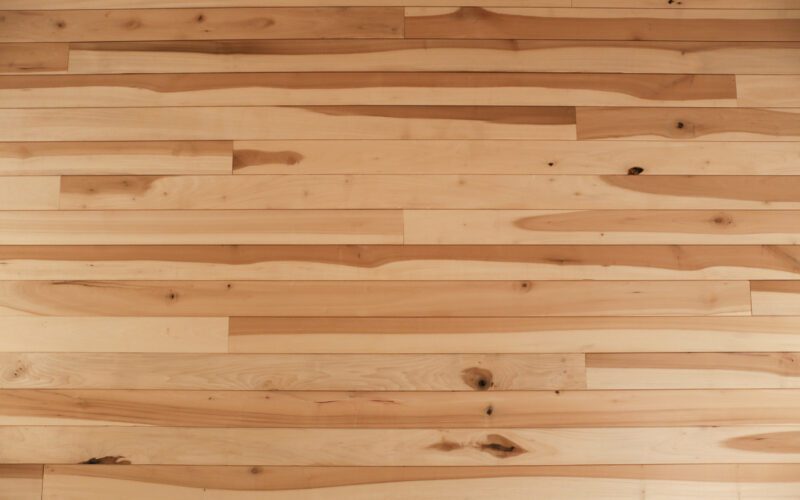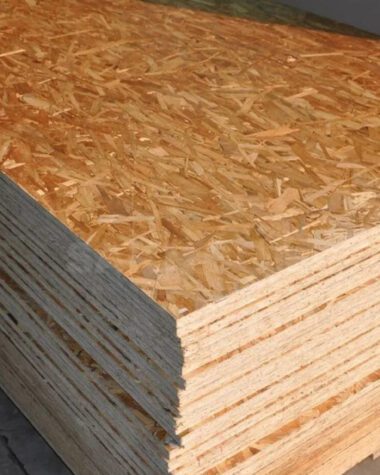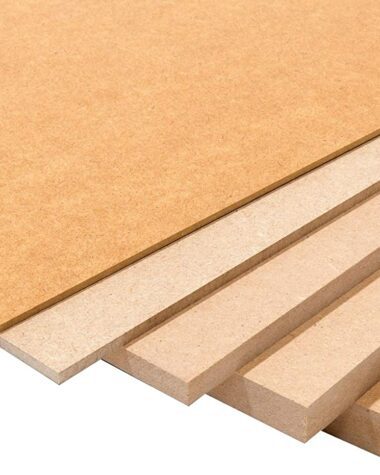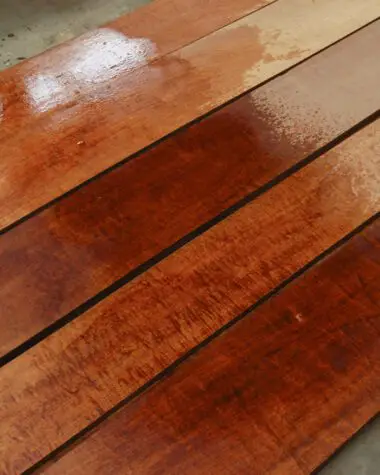Poplar wood is also known as tulipwood, American tulip, or yellow poplar. This hardwood comes from trees in the magnolia family called Liriodendron tulipifera. Poplar has many characteristics similar to softwoods, like pine wood.
Furthermore, poplar wood is similar to those other softwoods in terms of uses. Nevertheless, it is still a hardwood because it is a deciduous tree, which means that this type of tree sheds its leaves annually.
Types of Poplar Wood
There are various species of poplar wood that exist around the world. Let us focus on some of them.
Balsam Poplar (Populus balsamifera)
Balsam poplar has a lightweight wood. It is indigenous to northern Canada and the United States. It is a deciduous tree with a modest size and quick growth. Its tree is around 80-100 feet (25-30 meters) long, with a trunk diameter of 3 to 5 feet (1.0-1.5 m). The Balsam Poplar tree has an open crown and a tall, straight, cylindrical bole.
Black Poplar (Populus nigra)
Lombardy Poplar and Mappa burl are common names for Black Poplar. It is indigenous to Europe, western Asia, and Northern Africa. In North America, it is grown as an ornamental. It is a medium-sized tree that is 65–100 feet (20–30 meters) tall and has a trunk diameter of 3–5 feet (1–1.5 meters).
White Poplar (Populus alba)
Silver Poplar is another name for White Poplar. It is scattered throughout central and southern Europe and into central Asia. It is lightweight and plush. The white poplar is a medium-sized tree growing to a height of 50 to 80 feet (15 to 25 meters) with a trunk diameter of 2-3 feet (.6-1.0 m).
Yellow Poplar (Liriodendron tulipifera)
Tulip Poplar and American tulip are two common names for yellow poplar. Eastern US states are where it first came from. It is remarkably stiff, light in weight, and extremely stable.
It is a deciduous tree of medium size and quick growth. Its tree is between 40 and 50 meters tall, with a trunk diameter of 6 to 8 feet (1.8-2.5 m).
Rainbow Poplar
The very pale color of poplar causes it to occasionally absorb minerals from the soil. When this occurs, the wood may display various colors, including blue, green, purple, red, and yellow. The wood with these qualities is known as “rainbow poplar,” It is utilized more for decorative purposes than ordinary poplar, which is used more for practical purposes.
Properties of Poplar Wood
No matter what classification you recognize, poplar wood is a very popular type of wood for use as it possesses several properties worth noting. In this section, let us learn more about this wood type and discover how “popular” poplar wood is.
Resistance/ Durability
Poplar wood is less durable compared to many other hardwoods used for interior and exterior purposes. Thus, you should adequately polish the poplar wood for outdoor use to boost its longevity. Poplar woodwork won’t endure very long without appropriate finishing and may become prone to damage due to moisture.
Color
The heartwood or the core section of the poplar tree might appear green but is often pale cream to yellowish brown. Although the sapwood, or outermost part, is often white to pale yellow, it is not always simple to distinguish where the heartwood meets it. With time, these hues will darken or turn yellow.
Read: Sapwood vs. Heartwood
Grain Pattern
In terms of poplar wood’s grain pattern, it has a straight and uniform grain structure.
Workability
This wood is flexible and simple to process, plane, turn, glue, and bore. It dries quickly, barely moves while performing, and rarely splits when nailed. It very well absorbs and retains paint, enamel, and stain.
Uses of Poplar Woods
Poplar combines low price and versatility to hide its true appearance. Therefore it is a good choice for people who need kitchen cabinets on a budget. Also, poplar is soft and may not be as tough as other hardware hardwoods for furniture. Therefore, it is not the first choice for making fine furniture, but it is quite popular for painted furniture. The softness of poplar means stained poplar is easily scratched, damaged, or even dented.
To avoid this problem, apply an oil-based paint to increase the wood’s resistance to dents and scratches. Therefore with this treatment, popular furniture becomes good and affordable furniture compared to pricier hardwoods.
More about Poplar Wood
Reactions to poplar wood are typically not too severe. However, most participants described poplar wood as irritating, and many of these reactions included skin, eye, and even respiratory irritation. Some people also mentioned asthmatic symptoms.
Poplar takes a while to dry. As soon as it dries out, it burns quickly and emits minimal smoke. Your poplar wood will take at least 6 to 12 months to dry completely. However, dividing and stacking it off the ground will help it dry more quickly.
Poplar trees can be left standing. They continue to be among the fastest-growing trees in the world and the most sustainable species. They are also friendly to the environment.
Poplar trees benefit the ecosystem in various ways, including by preventing soil erosion. Additionally, poplar contributes to a decrease in desertification and an increase in the richness of natural ecosystems. Poplar contributes to improving the scenery. It helps to sequester carbon dioxide from the atmosphere regardless of whether you are using a completed product made of poplar.
Other Hardwood Types
- Ipe Wood is also called Brazilian walnut or ipe (pronounced e-pay) wood decking. It is a stunning exotic wood from Central and South America.
- Koa Wood– Koa wood is native to Hawaii and can only be harvested from the islands, which is why it is very expensive.
- Rubber Wood– Rubberwood has many outstanding qualities. It is durable, resilient, and eco-friendly. These qualities make it a good wood material for furniture and home use.
- Sapele Wood– Of all the wood varieties, Sapele is known for its natural beauty and unique wood grains, which may interlock in a ribbon-like pattern.
- Balsa Wood– Balsa wood is a lightweight wood type yet with strong quality.
- Cherry Wood– No one can deny the amazing qualities of cherry wood, which could be the reason why wood enthusiasts cherish it the most.
- Mahogany Wood– The possible extinction of Mahogany wood cannot clear the fact that it is one of the most valuable wood types existing.
- Teak Wood– There are countless reasons why teak wood is prized for its value.
Conclusion
Poplar wood is a hardwood that is light but durable. It may not be as strong as other types of hardwoods, but treating and using different techniques like staining and painting can be worthwhile and cost-effective. Because of its qualities, poplar is used for making painted furniture, sidings, molding, trims, cabinets, and decks.








